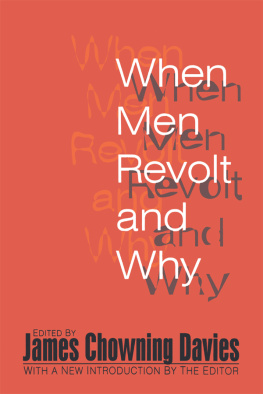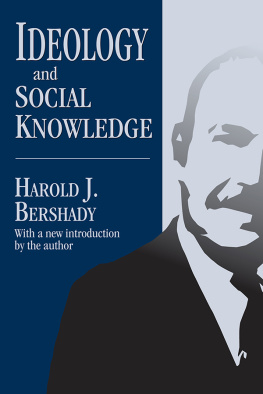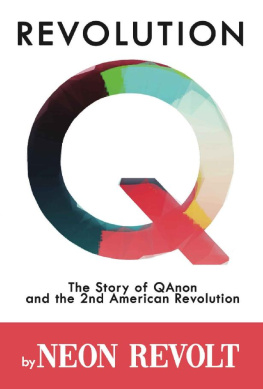When Men Revolt and Why
When Men Revolt and Why
EDITED BY
James Chowning Davies
WITH A NEW INTRODUCTION BY THE EDITOR
Originally published in 1971 by The Free Press.
Published 1997 by Transaction Publishers
Published 2017 by Routledge
2 Park Square, Milton Park, Abingdon, Oxon OX14 4RN
52 Vanderbilt Avenue, New York, NY 10017
Routledge is an imprint of the Taylor & Francis Group, an informa business
New material this edition copyright 1997 by Taylor & Francis.
All rights reserved. No part of this book may be reprinted or reproduced or utilised in any form or by any electronic, mechanical, or other means, now known or hereafter invented, including photocopying and recording, or in any information storage or retrieval system, without permission in writing from the publishers.
Notice:
Product or corporate names may be trademarks or registered trademarks, and are used only for identification and explanation without intent to infringe.
Library of Congress Catalog Number: 96-38938
Library of Congress Cataloging-in-Publication Data
When men revolt and why / edited by James Chowning Davies; with a new introduction by the editor.
p. cm.
Originally published: New York: Free Press, 1971.
Includes bibliographical references.
ISBN 1-56000-939-X (alk. paper)
1. Revolutions. 2. Social change. I. Davies, James Chowning, 1918
HM283.D37 1996
303.43dc20
96-38938
CIP
ISBN 13: 978-1-56000-939-9 (pbk)
To the Memory of
Crane Brinton
He never fathered a revolution
but he articulated its anatomy in our disjointed time
Contents
by THOMAS MASARYK
by MARGARET M. PHILLIPS
by FRIEDRICH ENGELS
by J. H. BOEKE
by O. MANNONI
When servants sever ties with masters
National independence by O. MANNONI
by GEORGE WADA and JAMES C. DAVIES
by EDGAR SNOW
Revolution in China in Mao Tse-tung
Days in Changsha by EDGAR SNOW
by EDGAR SNOW
by ARISTOTLE
by ARISTOTLE
by ALEXIS DE TOCQUEVILLE
by A LEXIS DE TOCQUEVILLE
by ALEXIS DE TOCQUEVILLE
by KARL MARX and FRIEDRICH ENGELS
by DAVID C. SCHWARTZ
by JAMES C. DAVIES
by STANLEY M. ELKINS
by J. DOLLARD, LEONARD W. DOOB, NEAL E. MILLER, O. H. MOWRER, and ROBERT R. SEARS
by JOHN DOLLARD AND OTHERS
by JOHN DOLLARD AND OTHERS
by LEONARD BERKOWITZ
by GEORG SIMMEL
by BRUCE M. RUSSETT
by MANCUR OLSON, JR.
by IVO K. FEIERABEND and ROSALIND L. FEIERABEND
by LLOYD A. FREE
by DOUGLAS BWY
by TED GURR
by CRANE BRINTON
This book offers quite a varied menu. One of the selections was written over 2000 years ago, a few as recently as the year of original publication. All are contemporary in that they deal with a species that originated maybe 100,000 years ago and is still alive and well and genetically unchanged: Homo Sapiens. However, the environment with which human beings interact has changed dramatically, particularly since the Industrial Revolution. Nonetheless, the expectations of people these days have the same genetic origins, in the enormously elaborate human brain, that they have had from the beginning of humankind.
This book hopes to encourage you to look closer and more deeply into the relationships between the many billions of human organisms, genetically considered, and the institutions that have originated to facilitate the full humanization of human beings. But not to the neglect of looking at the need for changing institutions that, like wooden-wheeled wagons, have outworn their utility. When these old vehicles become blind engines that their owners use for their own selfish purposes, when institutions inhibit rather than facilitate everyones desire to live a full life, you are apt to get violence.
So this book starts with a theory of development that links human organisms (notably their brains) and institutions (notably the social and political ones). The theory itself hadnt been developed when the first edition of this book was published. You might just like it, as the high-protein main course in this portable feast.
In 1971, when this book was first published, people in several places on our little planet were seething, if not boiling, in rebellion against established governments. In Vietnam, a people were fighting for their autonomy. They had the support of one imperialist nation (the Soviet Union) against another (the United States). It was a twentieth-century repeat of the American War of Independence in 1776, when imperial France supported the American colonies against imperial Great Britain. Also in 1971, Americans of African descent in the United States were rebelling against degradation that for more than three hundred years had established mutually hostile mind-sets among both whites and blacks. And women of whatever ancestral origin, in many advanced countries of the world, were vigorously contesting their degradation.
A quarter century later, things seem to have cooled down a bit. Vietnam has its independence, andlike the United States after winning its independence from BritainVietnam began trading with its antagonist, the United States. African Americans are slowly gaining more respect, and women are being treated more equally. There still are troubles between Russian imperialism and its former internal colony states. Savage wars rage in Central Africa and the Balkans. Aside from such seemingly nonglobal, parochial conflicts, there has been little political violence.
Nonetheless, we remain quite ignorant about the elemental forces that impel peoplesnations and minorities within themto resort to violence and usually we are surprised at their anger and shocked by their violence. We endure, even harbor, explanations that are superficial for forces that are deep and earth-shaking.
We could continue, like media writers, to concentrate our energy completely on observing political violence in the real-life context of present-day events that we can watch on television. Such easy concentration leaves little energy for examining the basic ingredients of both individual and institutional development. We thus are destined to re-examine each idiosyncratic case, in both individuals and institutions, as though each contained no ingredients common to other cases except blood and tears. If we remain on that level of analysis, we will never run out of things to look at in horror from a safe distance, and we will never know much more than we already know about each new instance.
To paraphrase Kluckhohn and Murray (1948, p. 35): every individual is in some ways like all others, like some others, and like no others. In the social sciences particularly, we have for the most part perhaps concentrated on individual and collective behavior that is like some other behavior and not like the behavior of all other people. This introduction and this book propose ways to analyze more universally.
To establish fundamental, universal principles, we must get to the ingredients, the basic components of human behavior. The category of components that has been most neglected are those that rest within the human organism. These organic components dont really rest there, because they are in














